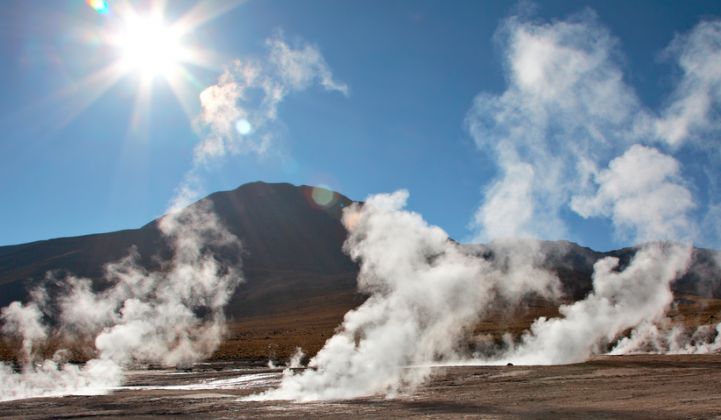Ormat Technologies, a leading geothermal developer based in Nevada, is being secretive about plans to get into the energy storage business.
The company, which is dealing with a stagnating U.S. geothermal market, indicated in April that it wanted to explore other areas of business -- both geographically and technologically. Those plans will include storage.
During a third-quarter earnings webcast earlier this month, CEO Isaac Angel claimed that the company is “progressing well” in storage and would soon have a development deal. He also indicated that Ormat would be combining geothermal with solar to offer a “blended solution.”
In a brief telephone conversation with GTM, VP of Business Development Rahm Orenstein confirmed Ormat's plans, but declined to expand on them. When asked if he could give some indication of the storage technology involved, he was vague in his response. "We have a multi-disciplined team, so there are plenty of possible alternatives," he said.
Meanwhile, competitor AltaRock Energy is being slightly more forthcoming about its plans to marry geothermal with storage. The company announced this week that one of its subsidiaries had bought the 55-megawatt Bottle Rock dry-steam geothermal power plant in California, to which it plans to add storage.
AltaRock also says that it wants to add battery-based storage to its existing geothermal plants. So, why are geothermal companies rushing to energy storage -- what do they have to gain?
In a word: flexibility.
“Geothermal can benefit from energy storage in exactly the opposite way to wind and solar. They (wind and solar) need storage to provide baseload energy. Geothermal is a reliable baseload source but can achieve greater flexibility with storage," said Benjamin Matek, research projects manager at the Geothermal Energy Association (GEA).
With more renewables entering the mix, that flexibility is increasingly in demand, said Matek.
Back in 2013, Karl Gawell, executive director of the GEA, told GTM: “We have always marketed ourselves as baseload power. We are now seeing that the markets are changing, and how far we can go to change with them is still an open question.”
Perhaps the addition of storage will become part of the answer to that question.
In California, there is another reason for Ormat to offer energy storage. California's storage target requires the big three investor-owned utilities to add 1.3 gigawatts of energy storage to their grids by the end of the decade.
GEA also refused to comment on Ormat and its future plans. Matek did have insights into what forms of energy storage a geothermal company might be interested in.
Although almost any technology might be a good fit for geothermal, compressed-air energy storage has some “geological overlap," he said.
Ormat owns and operates power stations around the world, including in Kenya and Guatemala. But until now, the company has concentrated its efforts on the world’s biggest known geothermal field called the Geysers, located 70 miles north of San Francisco.
Geothermal is niche even by renewable energy standards due to its geological restrictions. It also has very high upfront exploration and construction costs -- although these are mitigated over time by comparatively low running and repair costs.
Ormat was not immune to those problems. Now the company’s longer-term strategy encompasses more than geothermal -- with a goal of increasing revenues from non-geothermal technology from roughly 10 percent today to 25 percent. That new business will come from solar power, an area where the company already has expertise, as well as energy storage, which it has described as “the next big wave in renewable energy.”
Orenstein points out that the company has a great deal of in-house research and technology expertise. Although it may be able to leverage some of that talent for energy storage, Ormat will likely acquire some of the necessary technology to accelerate its entry into the market.



